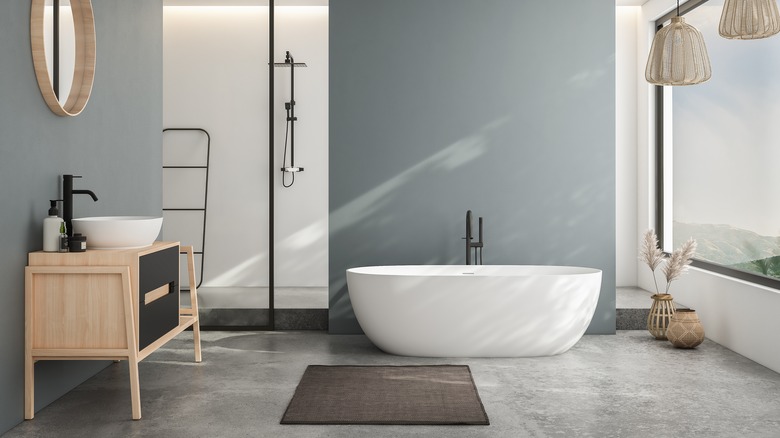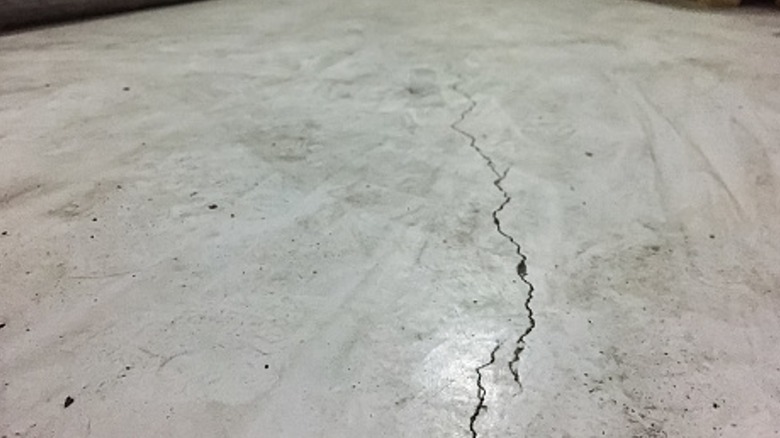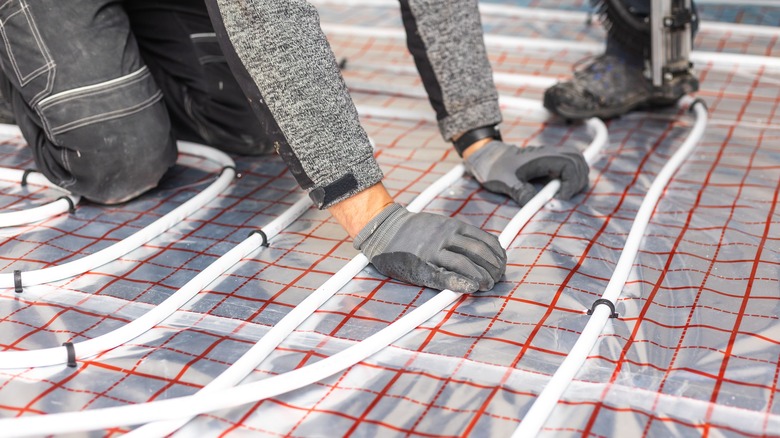Why Installing Concrete Flooring In Your Bathroom Could Be A Big Mistake
Concrete is gaining popularity as a flooring material, especially in modern and industrial homes. The material provides a sleek, contemporary look that sets your home apart from the others. Concrete is also highly durable, which is ideal in busy homes. However, it's important to consider if concrete flooring is right for your space before installing it. In areas like the living room, concrete flooring may be alright, but installing concrete in the bathroom might cause unwanted issues. While concrete is water-resistant and easy to clean, it can also be slippery once it gets wet and can stain easier than other materials. Concrete also requires regular maintenance to ensure it stays in the best condition. The material can also have some trouble maintaining a comfortable temperature.
Bathrooms are one of the most high-trafficked rooms, which makes choosing the right materials all the more important. Safety should be a top priority for all house members, but especially for young children and elderly people who may be more unstable on their feet. And the slip potential can increase if the concrete floors are polished. So, water pooled on a concrete bathroom floor from stepping out of the shower or splashing water from the tub can create a slip-and-fall hazard. Water getting on a bathroom floor is nearly unavoidable, so you have to be careful when stepping out of the shower or walking on the floor after someone has bathed. Opt for finishes that will add more traction to concrete floors during installation.
Concrete's porosity can cause issues
Concrete floors are beloved for their durability. However, while concrete is hard, it's still a porous material, which means it has tiny holes that water can seep into. Water getting into concrete can cause issues such as staining and cracking. In a bathroom, getting water on the floor is inevitable. Allowing water to sit on the top of a concrete floor can cause moisture to seep inside and cause discoloration. With this in mind, it's important to wipe up spills of not only water but all liquids, especially acidic ones, from concrete as soon as possible. For set-in stains, a drum sander with coarse sandpaper can help strip the surface and bring stained concrete back to life, although you may have to seal and polish it again.
The porosity can also lead concrete floors to crack. This happens over time and with repeated exposure to water and moisture like drips from getting out of the tub or steam from a hot shower. Excess moisture slipping into the concrete can also cause mold if left untreated. If water gets into the dark cracks, the constant moisture from a well-used bathroom can cause mold growth.
Using a concrete sealant can help make the material less porous, preventing cracks, mold growth, and stains by creating a protective layer. It's recommended to reapply the sealant every two to five years. However, in bathrooms exposed to humidity, more frequent sealing wouldn't be a bad thing.
Concrete can hold onto temperature
Another common complaint is the temperature of concrete floors. Concrete tends to be a colder material on its own, and because it has a high thermal mass, it's more likely to retain that cold temperature. This is particularly true for concrete that has slabs on the ground rather than on a subfloor. The chill coming up from the ground will keep the concrete floors on the cooler side. So, ground-floor bathrooms with concrete floors will most often always have a chill, but this can be true of bathrooms on upper levels as well.
Concrete also has a long thermal lag time, meaning that it will be harder and take longer to warm up concrete floors since its natural state is colder. Even if you have hot air coming through vents or a steamy shower, that concrete bathroom floor can be unpleasantly cold when stepping out of a warm shower.
The best way to combat this is by installing radiant floor heating before pouring the concrete slab. Radiant heating uses a heating element, through either coils or heating mats, to warm up the floors. The direct and repeated contact with heat keeps concrete floors at a more comfortable temperature. Concrete floors have been a go-to, but installing them in the bathroom can be a mistake if installed on their own. But using proper sealing, the right finishes, and in-floor heating, can be a solution to concrete's most major issues.


